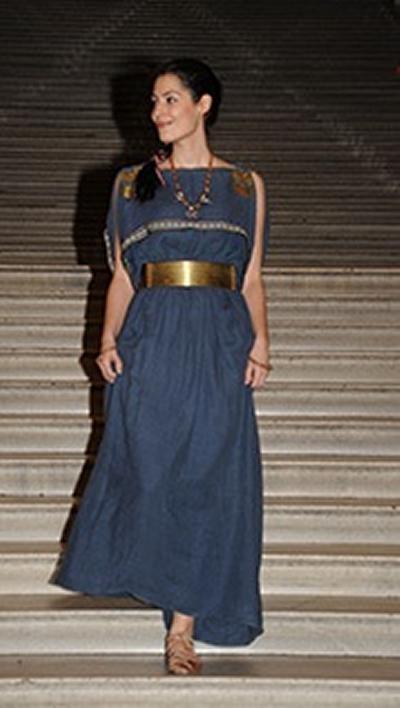Catwalk clothing showcases research into prehistoric textiles and design

Research by archaeologists at the University of Southampton and the Natural History Museum Vienna will be showcased in London this weekend at a special prehistoric fashion show event – staged as part of an international Humanities festival, ‘The Time and the Place’.
Clothing and jewellery displayed on the catwalk will demonstrate findings of a three-year collaborative research project called ‘Creativity and Craft Production in Middle and Late Bronze Age Europe’ (CinBA).
Funded by Humanities in the European Research Area (HERA) and involving universities and organisations across Europe3, the project explores how prehistoric people dressed and expressed creativity and identity through pottery, metalwork and textiles during the period 1800-500 BC.
University of Southampton archaeologist Dr Jo Sofaer, who is leading CinBA, says: “I’m interested in finding out what drove Bronze Age people to make the leap from clothing which was purely functional – to using clothes, along with metalwork and accessories, as a form of expression.
“It is well understood that the Bronze Age saw huge advances in techniques to produce clothes, pottery and metal objects, but the wealth of creativity employed when making these goods is little recognised or researched.

“The clothing collections we’ll be exhibiting at the fashion show demonstrate the intricate weaves, patterns and striking colours prehistoric people used in their dress.”
The catwalk collection has been created by Dr Karina Grömer and Helga Rösel-Mautendorfer from the Natural History Museum Vienna and was partly inspired by CinBA research into prehistoric textiles found at salt mines at Hallstatt in Austria. The wet and salty properties of the salt mine preserved the miner’s clothing and accessories over thousands of years, making it now possible to chart the development of textile engineering in Europe using the many artefacts found at the site.
Thirty costumes will be presented, worn by men, women and children: from stone age beginnings, through the creative impact of metal jewellery and woven textiles in the Bronze Age, ending with the coloured costumes of a Celtic tribe from Central Europe.
Dr Grömer comments: “Usually a picture of dull and unattractive clothing comes into our mind, if we think about people from Prehistory. We would like to show, that the people from Stone and Bronze Ages made the best out of their materials, They used patterns, colour and nice jewellery. They had their style, their wish to express wealth, status, identity and personality. All the costumes are based on archaeological finds and they were handmade by us.”
The fashion show is just one of a variety of activities undertaken as part of the CinBA project such as; school outreach, museum and online exhibitions, demonstrations of Bronze Age craft skills, books and a conference bringing together academics with expert knowledge of the prehistoric period and contemporary craftspeople.
The Time and the Place